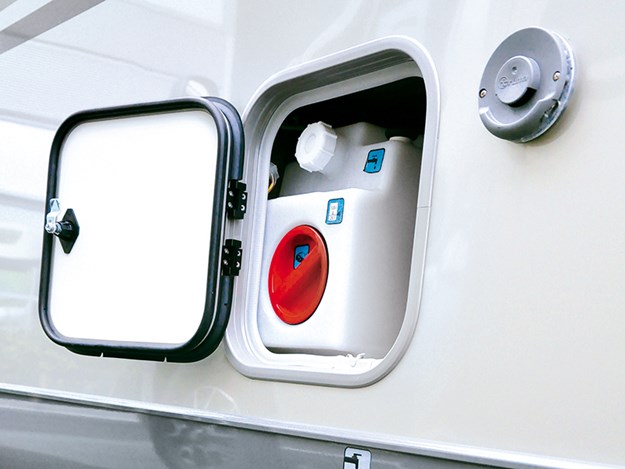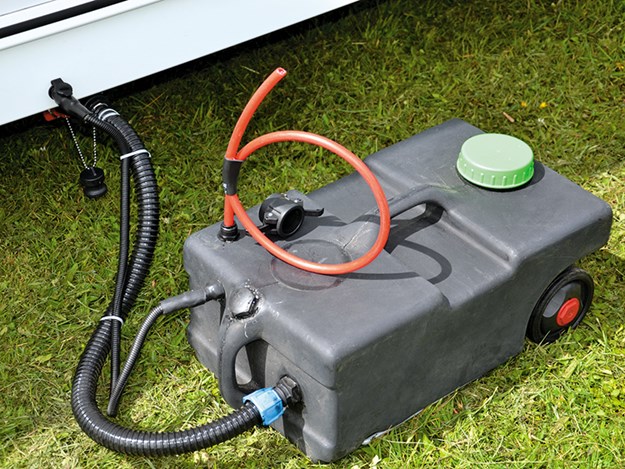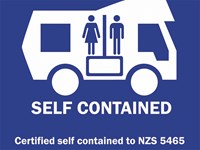
Since its inception in 1956 the New Zealand Motor Caravan Association (NZMCA) has promoted the idea that all recreational vehicles in New Zealand should be self-contained. Part of their mission statement is the ‘protection of the environment’, and having all RVs self-contained is a key part of ensuring this is carried out.
What does Certified Self-contained (CS) mean?
To qualify for a CSC certificate, an RV must meet the criteria set out in the New Zealand Standard (Self-containment of motor caravans and caravans NZS 5465:2001). “A certified self-contained vehicle meets the ablutionary and sanitary needs of the occupants for a minimum of three days, without requiring any external services or discharging waste.”
Before an RV is issued with self-containment certification it is checked by an approved inspector. This examination covers fresh, grey and black water tank structure and capacity; sinks, hand basins and their plumbing; the toilet and how it is stored, secured and used; waste-water discharge hoses, their diameter and length and how they are stored; where the fresh water hose is stored, and more.
How do I get my RV certified?
NZMCA financial members can get their RV checks done by one (or two) of their 400-plus volunteer Self-Containment Officers around New Zealand. NZMCA examiners work in pairs if it is a first-time CSC examination for the RV. Either way, once the CSC checklist is signed off, it is forwarded to NZMCA Head Office for entry into the CSC vehicle register. The certification lasts four years.
Private companies, such as the nationwide enterprise SCNZ, are also registered to conduct CSC examinations. Their fee for this service is around $100.
Note that only NZMCA CSC certifications are recorded on their CSC vehicle register. While the individual companies approved to issue CSC certificates each keep their own register of approved RVs, there doesn’t appear to be a consolidated register of all approvals by all companies.
So if you a CSC certified RV, it is worth finding out who issued the CSC certificate, especially if the certificate document has been lost and you need a replacement.
 |
|
An external grey water tank must have a leak-free connection to the grey water discharge (black) pipe and the breather/ overflow (red pipe) must be leak free and clearly indicate when the tank is full.
|
How is the vehicle scheme managed?
Once registered, the RV is issued with a warrant card indicating the Certified Self-Contained status. This card should be displayed on the front windscreen, for easy inspection by those charged with policing freedom camping. A blue CSC bumper sticker is provided as a more casual indication of the RV’s status. Also issued is a certificate recording the RV’s complete self-containment specification, and a copy of this should be kept in the vehicle at all times.
When buying an RV it is strongly recommended that you make having it certified self-contained a condition of the vehicle sale and purchase agreement. Also include a condition that the certificate is issued by an Issuing Authority recognised by NZS 5465:2001.

Keeping New Zealand clean
The original objective of looking after the environment is of course as important today as it was when the NZMCA first made it a part of their mission statement 60 years ago. NZMCA newbies must ensure their RV’s are certified self-contained to NZS 5465:2001 when they join, unless the NZMCA has issued them with an exemption.
Being CSC certified increases stopover opportunities. Since the Freedom Camping Act 2011 came into force, councils throughout New Zealand have taken a fresh look at how they manage RVs overnighting in their district away from organised campgrounds and holiday parks. Balancing the preferences of their ratepayers, such as small businesses which welcome the extra trade versus home-owners who see them as an eyesore and a general nuisance, has not been easy. However, the net result has been positive and there are now more places for certified RVs to make overnight stops without breaking the law.
These measures are designed to protect the health of all parties involved – both those inside and outside the RV. Which is why it is highly recommended that you get your vehicle Certified Self-Contained (CSC).
Find motorhomes, caravans and RVs for sale in NZ





